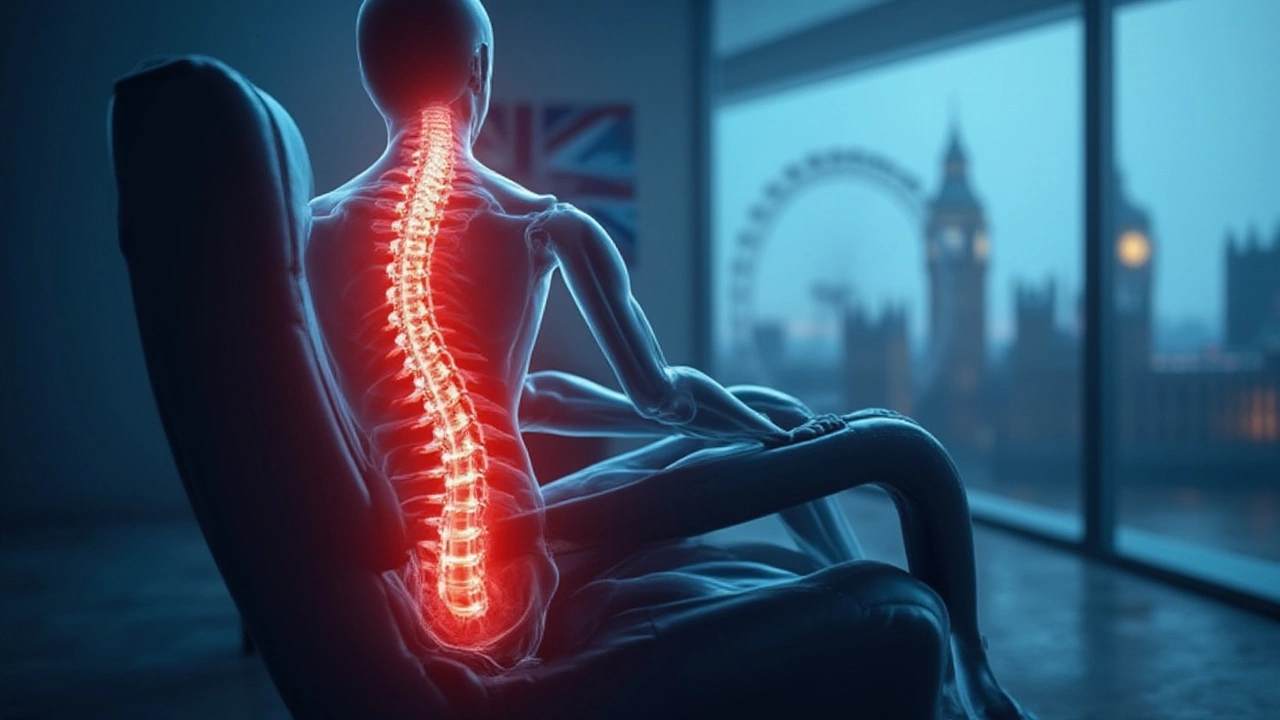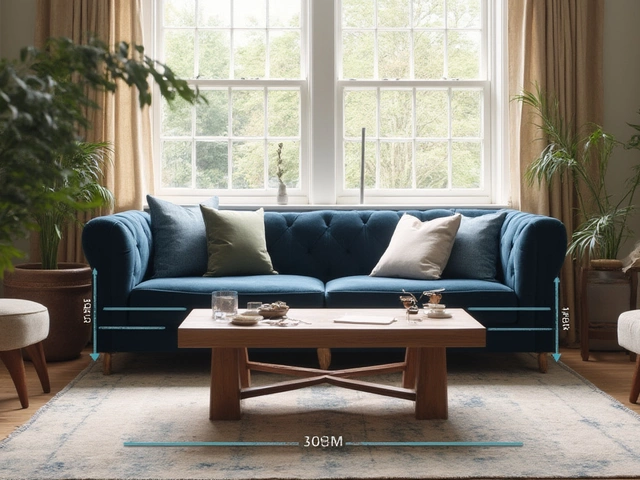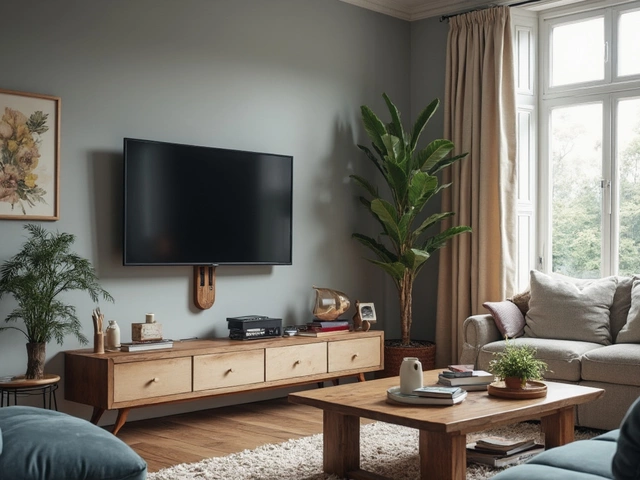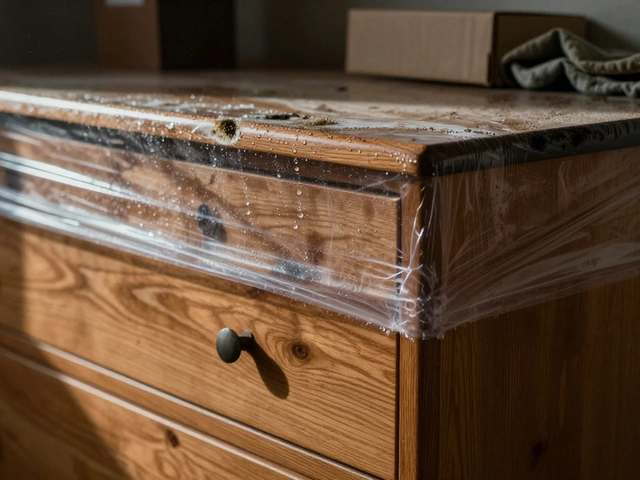 8
Jul,2025
8
Jul,2025
Ever lounged in a Lazyboy and wondered if your back is secretly plotting revenge? You’re not alone. These cushy recliners pull you in like a warm hug after a long day, but there’s a lot of chatter about what they’re doing to your spine over time. Are they a guilty pleasure that's quietly messing up your back, or have critics just got it wrong? Dive in—your slouching habits might never be the same.
The Truth Behind Recliners And Spinal Health
Lazyboy recliners didn’t accidentally become a household staple; people love them for a reason. The thought of leaning back, feet up, maybe with a cold drink in hand—who doesn't crave that after a busy day? Yet, a lot of folks believe slouching in a recliner isn’t great for your back. But what’s the science behind all this?
The big issue with chairs—recliners included—is how they support, or don’t support, your spine’s natural S-curve. If your chair doesn’t respect those curves, your back might start to grumble over time. Studies out of the Cleveland Clinic show that the absolute worst position for your spine is sitting completely upright at 90 degrees without good lumbar support—a shock to most office workers. Interestingly, a Scottish study from the Musculoskeletal Research Centre found a 135-degree reclined position put less strain on the lower back compared to straight sitting, which means your recliner, when set right, could actually be doing your back a favor.
But not all recliners are created equal, and not every body is the same. A cheap chair without proper lumbar support is a recipe for lower back pain. Ever notice how older Lazyboy models tend to flatten over time? That worn-out padding can turn a cozy cloud into a rigid board. On the other hand, newer Lazyboy recliners often come with built-in ergonomic features, like adjustable lumbar support and memory foam, which can help keep your back aligned.
One interesting fact: spinal surgeons told the Huffington Post that most back injuries are caused not by a single bad sitting session, but by years of poor posture and unsupportive furniture. It’s the little things you do every day that add up. That means if you’re spending hours on a recliner binge-watching Netflix or gaming, how you’re sitting matters a lot. Just because it feels soft doesn’t mean it’s helping your back.
An often overlooked point: movement is your best friend. The Mayo Clinic recommends getting up and stretching every 30-60 minutes, no matter how comfortable your seating. Even the fanciest Lazyboy can’t beat the healing power of movement for your spine.
What Makes A Recliner Bad For Your Back?
If you’re picturing all recliners as spine destroyers, it’s not quite that simple. The devil’s in the details. Let’s break down what can actually make a Lazyboy recliner—and similar chairs—bad for your back.
- Improper Lumbar Support: Without support in the lower back, your spine sags. Over time, this strains the muscles and ligaments, causing you to slouch more. Many cheap or older recliners don’t offer this vital support.
- Bad Posture Habits: People tend to sink into recliners, then twist or hunch for hours, especially if the TV or screen isn’t directly in front. Awkward positions can stress your discs and ligaments.
- Poor Chair Fit: One-size-fits-all doesn’t apply to recliners. If your feet dangle or your knees hit awkwardly, circulation and spinal alignment suffer. Lazyboy offers different sizes, but many people go years without realizing their chair isn’t the right fit.
- Worn-Out Padding: A saggy seat can throw your hips out of alignment, putting pressure on the lower back. It’s like sleeping on an old mattress that’s lost its oomph.
- Extended Sitting: Even the best recliner isn’t meant for marathon sits. Prolonged lounging leads to weaker core and glute muscles, which stops them from doing their job supporting your spine when you’re not sitting.
Doctors from Mount Sinai point out that back pain isn’t always from a single cause, but a mix of poor furniture, lack of movement, and bad posture. Lazyboy recliners can fit ANY of these categories, depending on how you use them and how well they fit your body.
A table for your reference:
| Feature | Good for Spine? | Tip |
|---|---|---|
| Adjustable Lumbar Support | Yes | Pick a model with lumbar support you can tweak |
| High-Density Foam | Yes | Prevents sagging and keeps hips/alignment solid |
| Old, Worn Padding | No | Replace or upgrade when seat feels sunken |
| Poor Fit (too big/small) | No | Make sure your feet touch the floor and head/neck are supported |
| Excessive Sitting | No | Set reminders to move every 30-45 minutes |
So the answer isn’t a flat-out “lazyboys are bad for your back.” It’s more like, “they can be, but they don’t have to be.”

How To Use Your Lazyboy Recliner Safely
There’s a right (and a totally wrong) way to use even the best recliner. If you want to keep your back happy, try these tips that chiropractors and physical therapists agree on:
- Pick the right size for your height. When you sit down, your feet should be flat on the floor when upright, and fully supported along the leg rest when you lean back.
- Adjust the lumbar support until you feel a gentle arch in your lower back, not a gap or a “sinkhole” feeling.
- Keep your neck and head supported. To avoid tech neck, set your TV or screen at eye level, so you don’t have to look down or sideways as you lounge.
- Switch up your position regularly—shift, stretch, lean back, and even change which leg you cross over the other if you’re a habitual leg crosser.
- Get out of the chair every 30-60 minutes. Walk around, stretch, and give your hips and spine a break.
- Avoid sleeping in the recliner all night. It’s tempting, but sleeping in a semi-seated position long term can tighten up your hip flexors and stress your lower spine.
- If you have chronic back issues, talk to your doctor or a physiotherapist about cushioning addons or back support pillows custom-fit to your spine. They can make a world of difference if you’re attached to your recliner.
- Try the 135-degree recline for reading or watching TV. Research from Scotland says this angle relieves pressure on the back compared to sitting up straight or lying totally flat.
A lot of people stick with their old habits out of routine. Switching to a more back-friendly way of lounging doesn’t mean tossing your Lazyboy. Sometimes a simple lumbar pillow or swapping out the foam can give you another few good years out of a favorite chair.
Here’s something you might not expect: at a pain management conference in 2023, several experts said the most common mistake isn’t the furniture, but "static living." The less you move, the more trouble your back will see. Even the best ergonomic recliner can’t replace the benefits of walking, stretching, or hitting the gym a couple of times a week.
So, before blaming your Lazyboy, take a hard look at your sitting habits. Are you moving enough? Are you adjusting angles, adding support, and making sure your chair fits YOU?
Do Doctors And Back Experts Recommend Recliners?
It’s wild how opinions on recliners go all over the place, even among experts. Orthopedic surgeons and physical therapists actually disagree more often than you’d think, but there’s a growing consensus: the Lazyboy recliners available today (especially newer ones) aren’t the villains many assume, if you treat your body right.
Clinical research says that sitting slightly reclined, knees above or level with your hips, and lumbar supported, is less stressful for most backs than rigidly sitting upright. This is the big reason hospital beds for patients with spinal injuries often have a tilt or adjustable leg support—to take pressure off the lumbar discs. Translating that science into daily life, a well-made recliner mimics some of the benefits of those expensive beds, but with more style.
But—this is big—recliners don't "fix" your back. They’re not a treatment for chronic issues, sciatica, or herniated discs. If you use them carelessly, skip movement, or ignore pain, things can get worse, not better. I've heard from rehab therapists that some patients develop stiff hips because they use a recliner as their main seat for years. There’s a balance between comfort and mobility you can’t ignore.
- If you’ve had recent spinal surgery or acute pain, doctors usually recommend short periods in a recliner to take pressure off post-op wounds or herniated discs—but they’ll still tell you to move, stretch, and avoid dozing off for hours at a time.
- People with osteoporosis, arthritis, or limited mobility can find gentle recliners helpful for getting in and out of chairs, as they make standing up easier.
- Several chiropractors recommend lazyboys for pregnant women who struggle to get comfortable late in pregnancy—the reclined position relieves pressure on the lower back and hips.
- If you wake up every morning stiff or aching, it’s time for a new seating plan. Often, it’s less about the Lazyboy and more about your overall activity level and sleep setup.
Remember, there’s no single “right” chair for every back. Back pain is personal. Your friend’s miracle seat might be your worst nightmare. So, take advice, but listen to your body first.
Want to know where recliners get it right? When you find the sweet spot where your lower back feels supported, your feet aren’t dangling, and your neck isn’t cocked to the side, that’s where your body can relax and recover. The danger is letting comfort lead to immobility. That’s why experts keep banging the "move more" drum.

Troubleshooting: Is Your Recliner Causing Your Back Pain?
Let’s say you’re noticing more aches after lounging—is the recliner really to blame? Here’s a quick troubleshooting guide:
- Feel for support: Sit down and recline. Is there a gap at your lower back? Add a lumbar pillow. Still uncomfortable? The chair might not match your body’s shape.
- Check seating time: If you’re clocking three hours binge-watching, your back is probably aching from inactivity as much as bad support.
- Look at your neck: Are you craning or turning your head for a better view? Awkward positions can fire up neck and shoulder pain—move your TV or get a reading stand.
- Assess the foam: If your seat feels uneven or “bottomed out,” new foam inserts or a fresh chair might help.
- Change positions: Is the pain worse after certain sitting angles? Adjust the backrest or footrest until you feel a soft curve at your lower spine, not a flat or bowed shape.
- Compare seats: Try a different chair for a week. If the pain goes away, your Lazyboy is suspect. If it doesn’t, consider other factors like mattress, shoes, or work habits.
Sometimes it’s not the chair itself, but how you’re using it. One surprising fact: in a 2022 survey, about 70% of people who regularly stretched and moved while using their recliner reported less frequent back pain compared to those who sat for long, unbroken periods. So, the chair is just part of the picture.
If you’ve tried all these tweaks and are still feeling sore, don’t tough it out for months. Physical therapy or a medical checkup might uncover another cause—like sciatica, arthritis, or even something simple as tight hip flexors.
Sometimes pain isn’t even from your back. Poor blood flow after sitting too long can make hips, knees, or even your feet ache, tricking you into blaming your recliner unfairly. So, keep an open mind as you troubleshoot.
For most folks, making small changes—adding lumbar support, shifting the angle, getting up often—makes a world of difference between a lazyboy being a back enemy or a back friend.




